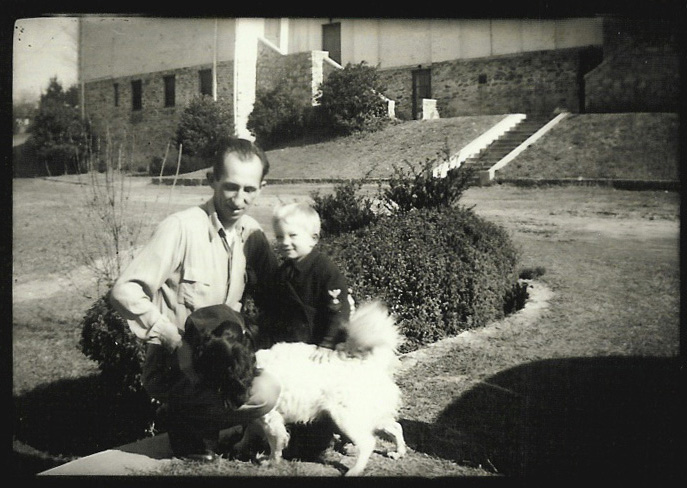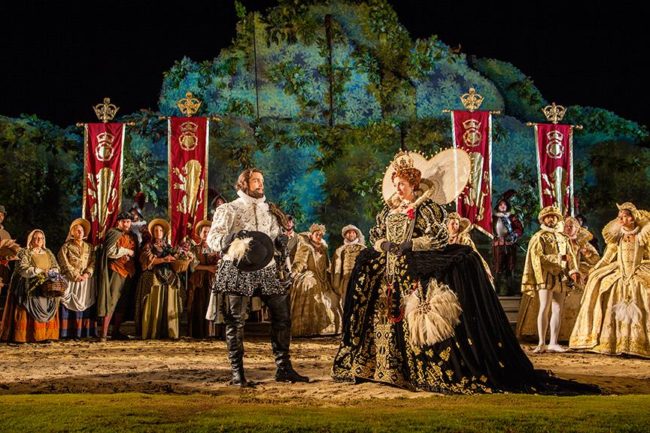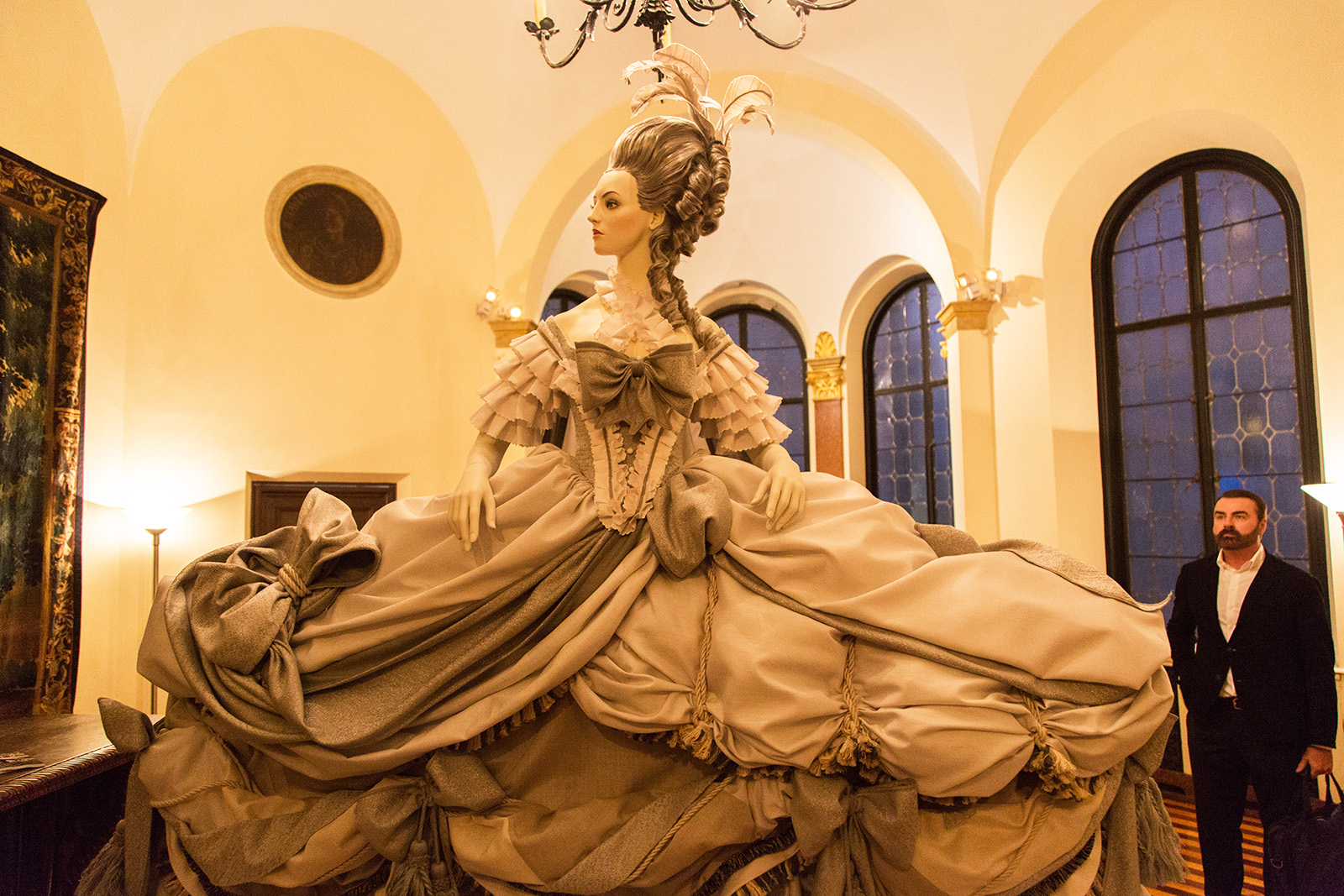This is the first installment of a new collaboration with the “50 for 50” project, an initiative of the North Carolina Arts Council in celebration of their 50th anniversary.
You could say there’s something lost about William Ivey Long. Not because he wandered away from his native Seaboard, North Carolina, for a studio in New York’s Tribeca, but because he consistently returns home. Long, a six-time Tony Award–winning costume designer, is nationally known for his work on Broadway hits including The Producers, Young Frankenstein, Hairspray, Nine, Grey Gardens, and Cinderella. And in the Tar Heel State, he’s celebrated for a forty-five-year relationship with America’s longest-running outdoor symphonic drama, The Lost Colony.
Long grew up in the theater. His father was a drama professor and stage director, and his mother was a playwright, actress, and drama teacher. The family spent every summer in Manteo working on The Lost Colony and even lived in the stage left dressing room of Raleigh Little Theatre for a number of years in the late 1940s. When it comes to his career path, Long says, “Yes, the apple fell directly beneath the tree.”
William Ivey Long
I’m from a farm family in Northampton County. My father was the youngest of eleven children. He was very lucky. In this little town, Seaboard, the town fathers and mothers decided they wanted their kids to have some refinement, so in the 1920s they taught elocution, Greek, and playwriting. The lady who came to teach playwriting had graduated from the Carolina Playmakers [at UNC-Chapel Hill] early on. One of her classmates was the great Paul Green and his wife Elizabeth Lay. Bernice Kelly was her name, and my father was in her very first playwriting class. Can you imagine? After four years of working with her, he was given the very first scholarship in playwriting to UNC as a high school student. To say that this changed the lives of this one part of a farm family is completely true.

To say that this changed the lives of this one part of a farm family is completely true.
He went to Chapel Hill [for] his undergraduate and graduate [degrees]. His master’s thesis director was Paul Green, who wrote The Lost Colony, and my mother and father met at The Lost Colony. My brother and sister and I have been working with The Lost Colony for decades. The family work[ed] in The Lost Colony in the summers—every summer—and in the winter my parents were at the Raleigh Little Theater in Raleigh, then at Chapel Hill with Playmakers, and then we went to Rock Hill, South Carolina, where my father founded the theater program—the department of dramatic art at Winthrop College, now Winthrop University. That was the family business.
The front hall [of our house] became the scene dock, and the dining room table was where my mother made costumes, literally. I remember once my father was directing a production of The Heiress. Well, the front room went and was on stage. We were denuded of our parlors—the paintings [and] all the furniture. That was standard procedure. Talk around the dinner table was always about actors, plays, fellow directors, and careers. [Eventually] my brother and I went to Yale Drama School. My brother is now a theater designer—Robert Long Associations—and my sister sings in the choir with The Lost Colony every summer.
Everybody tells stories down [in North Carolina]. We have nothing to do but drink and talk. I was lucky enough to have one great-grandmother alive and one grandmother. I was the first son, first grandson, and first great-grandson. That’s how to protect a little gay child in North Carolina. If you’re the first of three things, they’re going to let you live. So that was a good start. But it was all storytelling. It was all telling, “Remember when . . . ”
Everybody tells stories down [in North Carolina]. We have nothing to do but drink and talk.
My father’s aunts were still alive. I knew at least three of them. They were born when . . . I don’t know, in the 1870s? They had early memories of Reconstruction. Of course, they didn’t know it was called Reconstruction, so I grew up hearing all that “after the war” stuff, and it was very scary. We had cousins who had the “big house,” and there were all these swords in the front hall, and of course they were rusted, and I would frighten my brother to death and say [it was] blood curdling and dried on these swords. We grew up with all that with absolutely no thought in our head about what it all means, so this new resurgence of what it all means is an eye-opener I think still to a lot of people. Luckily, I grew up on college campuses, so the eyes were permanently open from an early age.
I do think coming from a storytelling DNA [shaped me] because I tell stories through costume design. I help people on stage . . . through choices of what people wear and what state they’re in. How they’re wrinkled or stained or dirty or pristine or expensive or cheap or whatever. You can tell basically everything about a character except the spark of life through clothing.

The first costume I made was for my dog Manteo in Manteo, North Carolina, and I made an Elizabethan Ruff and then I made a little cap. I thought I invented pleating. I’m told that Manteo the dog sat there for hours just not moving! It was an Elizabethan collar because we were working at The Lost Colony and the period was the Elizabethan period, so, of course, that was my version of cowboys and Indians. Then I started making costumes, I think when I was a teenager, for children’s theater productions. Remember this was the family business. I didn’t really analyze it because this is just what you do.
Every day brings new nuance. I’m still trying to perfect my craft on that. But there’s nothing more rewarding than an actor physically transforming. They never talk about it because, remember, that’s my job, but every now and then there’s a little wink.

New Projects:
This fall, the upholstery manufacturing company Sunbrella commissioned Long to design four costumes inspired by famous French paintings for a special French edition of Elle Decor magazine using upholstery fabric.
“I was reminded that I once saw in a magazine an evening gown that was designed by Vivienne Westwood out of wall-to-wall carpeting,” says Long. “I thought, ‘That is the perfect goal!’ That just hit my funny bone.” Long selected paintings by Pierre-Auguste Renoir, Elisabeth Vigée-Lebrun, Henri de Toulouse-Lautrec, and Edgar Degas. Everything down to the buttons and shoes on each mannequin was made from Sunbrella fabric. The costumes premiered during Fashion Week this September in New York at a launch party hosted by the French Consulate.
Long was delighted when he realized that Sunbrella is a North Carolina–based company. “Totally a coincidence,” he says. “But my theory is that all things lead to home. Everything leads to North Carolina.”
Learn more about the 50 for 50 project, an initiative of the North Carolina Arts Council, and stay tuned for more collaborations with Southern Cultures each month.

